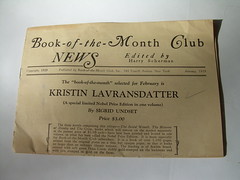It is often said that good news travels fast. If there’s one thing for certain, bad news travels faster. This is particularly true at work, when people spend much of their days talking to other people. Any good writer will tell you that there’s very little that’s appealing about a story that’s happy from start to finish.
Without some conflict, there’s nothing to get your teeth into. However, when that conflict involves misinformation – and particularly misinformation within or about your company – that kind of news can spell disaster.

One way to ensure that your message rather than office rumours are the ones at the forefront of your employees’ minds is to create a story that is compelling and get it to them regularly. Company newsletters have come to have something of a bad reputation for being stuffy and formal but this doesn’t have to be the case.
What format?
When considering the publication of a newsletter, you need to think about the format it will take. In this day and age, many of us receive email newsletters from all kinds of sources about things we’re interested in. However, if your workforce isn’t often based in front of a computer, you can miss much of your core demographic by choosing an electronic format.

Paper-based newsletters are easy to put in the staff room, on bulletin boards or even attach to everyone’s pay slip but they can also be costly to produce on a large scale. If you’re an organisation with thousands of staff spread across many sites – or even a small business looking to keep costs at a minimum – producing a professional-looking newsletter in print can be an expenditure you can little afford.
Of course, you don’t have to go all-or-nothing for one or the other. Providing a few printed glossy copies in communal staff areas and circulating an electronic version can give you the best of both worlds and can do wonders for generating belief in joined-up thinking at a senior level in the organisation.
Ensuring circulation
Once you’ve decided that you want to produce a newsletter, you want to make sure that it’s read. It takes a considerable amount investment in time and resources to get a good product and it would be a shame for this to go to waste.
Making sure you’re talking about things your staff are interested in is a vital first step. You can make the publication a mix of formal delivery of your message such as key developments in the company alongside more fun things or stories of personal interest. This works for newspapers; the same is true of corporate communications.
Consult with your staff to find out what interests them as a starting point. Giving the opportunity for members of staff to make contributions can bring a real sense of ownership that in turn brings readership. Finally, find ways to check that people are reading – offer giveaways, run quizzes or invite submissions. Every entry is proof that you’re reaching your audience. If you need external help, there are plenty of companies in this field such as SASLondon.
Risks of not communicating
The risks of not finding ways to make sure that your employees know what’s happening is simple – they’ll imagine what’s going on and tell others what they think. These rumours soon come to be accepted as facts and the last thing you want is a damage limitation campaign on your hands.
Communicating openly and clearly with people at all levels in your organisation pays dividends when it comes to commitment to your company. That is worth the investment in anyone’s book.
With some careful planning and skilful writing, your newsletter can be the talk of the office rather than some half-baked rumour that can damage morale and your company’s image.
Attached Images:
- License: Creative Commons image source
- License: Creative Commons image source
An article by Zoe Goodacre, a Marketing Graduate who loves to write articles about business and marketing.

